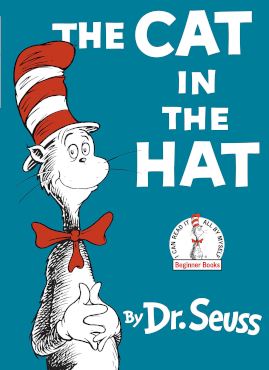The Cat in the Hat

The Cat in the Hat (1957) is a popular fictional read-aloud during Dr. Seuss week. It was written and illustrated by Theodore Geisel. I chose this book because it is often the first book thought of when someone mentions Dr. Seuss. It is also an easy read for early readers due to it being written with common sight words. During the story, two kids are home alone with their goldfish on a rainy day. They are bored and unsure of what to do to pass the time. In comes the Cat in the Hat with some fun tricks to play. He then introduces his friends Thing 1 and Thing 2 which wreak havoc on the house. The Cat in the Hat gets the mess cleaned up in the nick of time as the mother is walking down the driveway. This story can be used in the classroom to boost a child's love for creative writing and to help identify rhyming words at the least. This text lends itself to so many learning opportunities. After the r...





